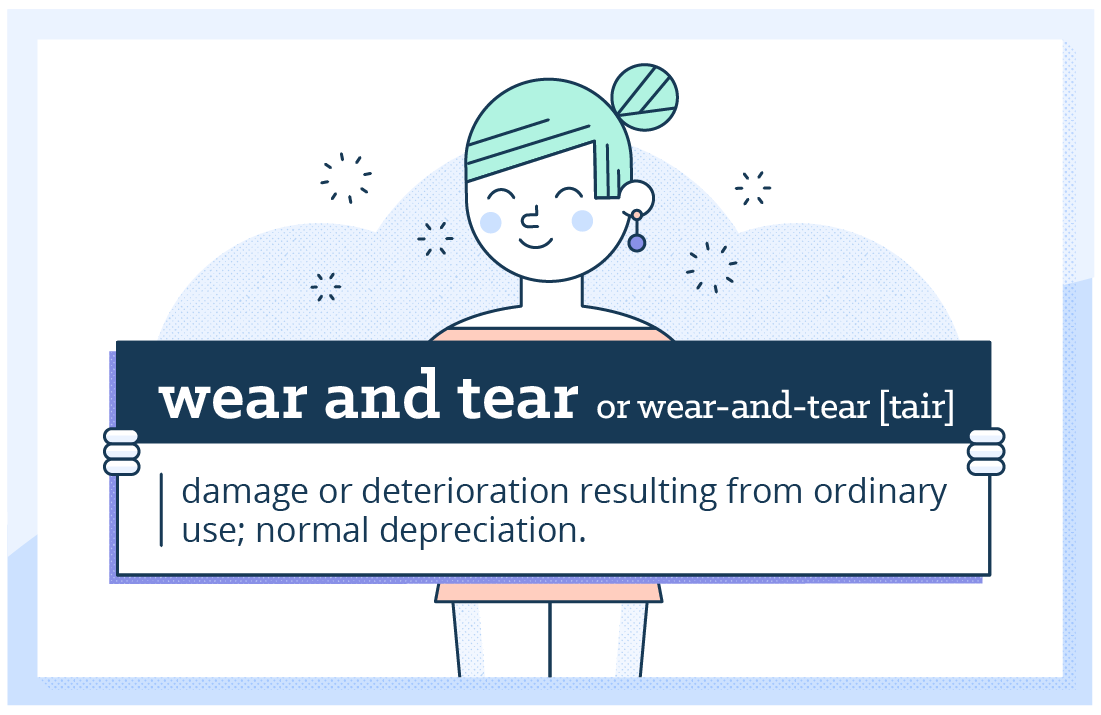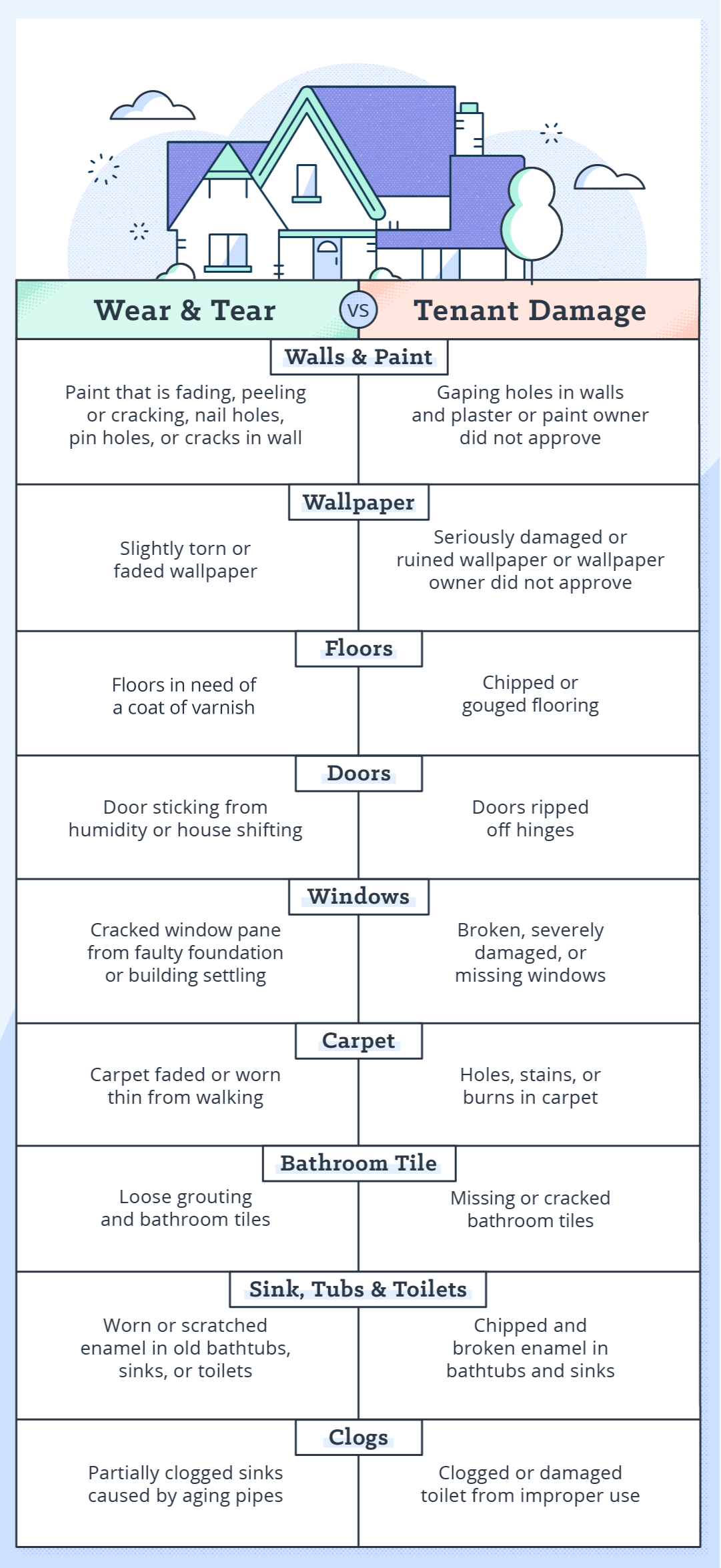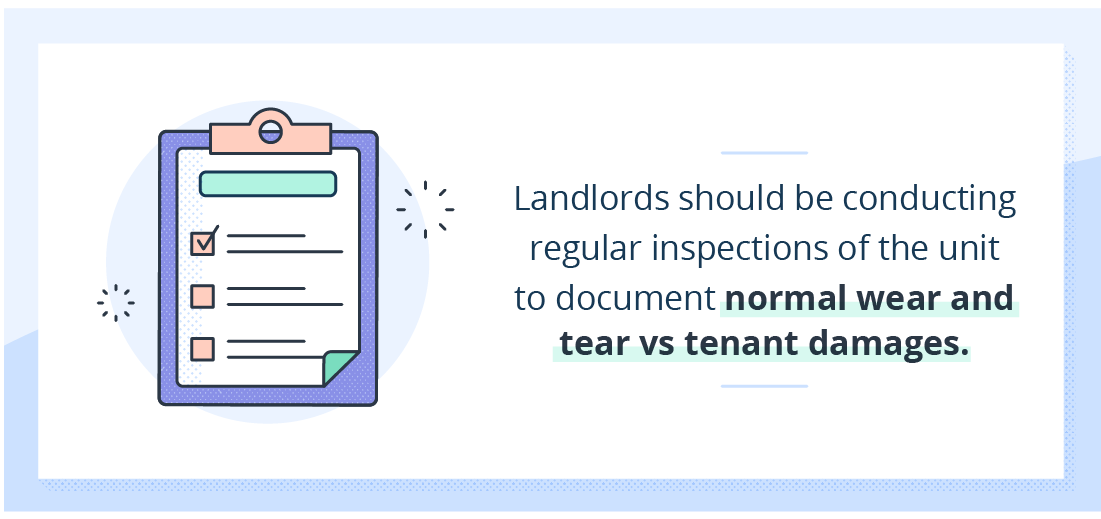12 min read
How Much Do Property Managers Charge? The Ultimate Guide
When you invest in real estate, there are a lot of decisions you need to make. One of them is deciding how...

“Normal wear and tear” is a term that gets tossed around frequently in the apartment rental world, but there is a lot of confusion around what it actually means and how it applies to landlords. This is because it’s a notoriously slippery concept to pin down, and the legal definition actually varies state-by-state. In order to clear things up, we go over the wear and tear definition along with specific examples for what is considered normal wear and tear.
In addition to reading this article, be sure to check out your state-specific landlord-tenant laws for more information about normal wear and tear definitions in your area.
Wear and tear is defined as “damage or deterioration resulting from ordinary use; normal depreciation” according to Dictionary.com. In simpler terms, it’s the damage that happens from everyday use over time. Examples of this would include car tires that need to be replaced every few years or shirts that get worn out after years of laundry cycles.

So, why is this relevant to landlords? It’s because, by law, landlords cannot hold tenants responsible for damages from what is considered normal wear and tear. Landlords are not able to withhold part or all of a tenant’s security deposit to repair items in the unit that have simply worn down with time. To be classified as normal wear and tear, the damage should be correlated to normal, everyday use. To be classified beyond normal wear and tear, the damage must be caused by irresponsible actions by the tenants, whether intentional or unintentional.
Though this may seem like a simple enough concept, actually differentiating between normal wear and tear and tenant damages in real situations can be a bit trickier. The type of damage also informs how long a landlord has to fix something; you can learn more about that in our article here. In order to help you spot the difference, we’ve outlined several common examples.
Below are several more examples of normal wear and tear vs tenant damages:

If landlords do find themselves in the situation of needing to deduct from the security deposit to pay for tenant damages, they should be sure to specifically document each damage for the tenant to review. Ultimately, you need to ensure you are following all local laws in regard to a security deposit before you take any drastic measures. If a tenant has damaged your property and you need to retain some of their deposit, it is important that you create an itemized and detailed list demonstrating why you kept the amount you did.
This security deposit settlement form should start with the total amount you received from the tenant, with every deduction listed below along with the final balance owed to the tenant. Items on the list might include the following:

In order to make sure both the tenant and landlord are on the same page about damages owed that can’t be attributed to normal wear and tear, landlords should always conduct a move-out inspection with the tenant. During the inspection, landlords can point out all the damages that will be deducted so the tenant is aware and has time to fix them if they can.
In order to really cover your bases, landlords should also be doing periodic inspections of the unit every 3-6 months. This way you can catch any critical repairs that the tenant may not be reporting, as well as document the overall condition of the unit to determine whether damages can be attributed to normal wear and tear or if they were caused by the tenant.
Take a look at our printable rental inspection checklists for move-out, move-in, and periodic inspection forms.
In addition to properly documenting damages and repairs, landlords should also do their best to prevent any excessive damage to their rental units by screening tenants for any red flags in their renting history. This can be done as part of the rental application process. Visit TurboTenant for more landlord tips, tricks, and advice for everyday situations.
12 min read
When you invest in real estate, there are a lot of decisions you need to make. One of them is deciding how...
17 min read
Whether you’re purchasing your first rental property or your tenth, finding the perfect home to generate significant cash flow is exciting. It...
20 min read
If you’re in the market to buy an investment property, the type of loan you pick will directly impact the size of...
Join the 700,000+ independent landlords who rely on TurboTenant to create welcoming rental experiences.
No tricks or trials to worry about. So what’s the harm? Try it today!